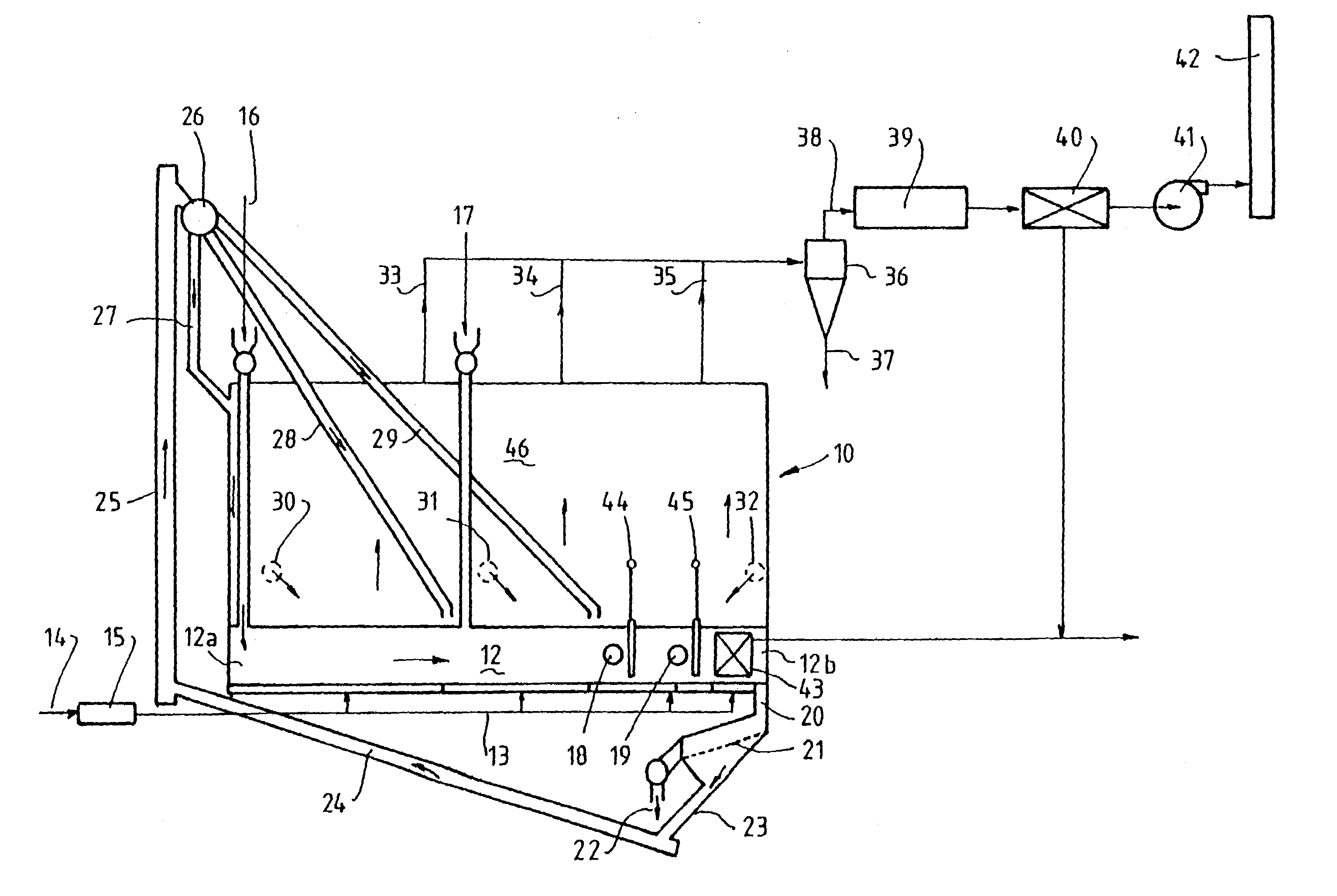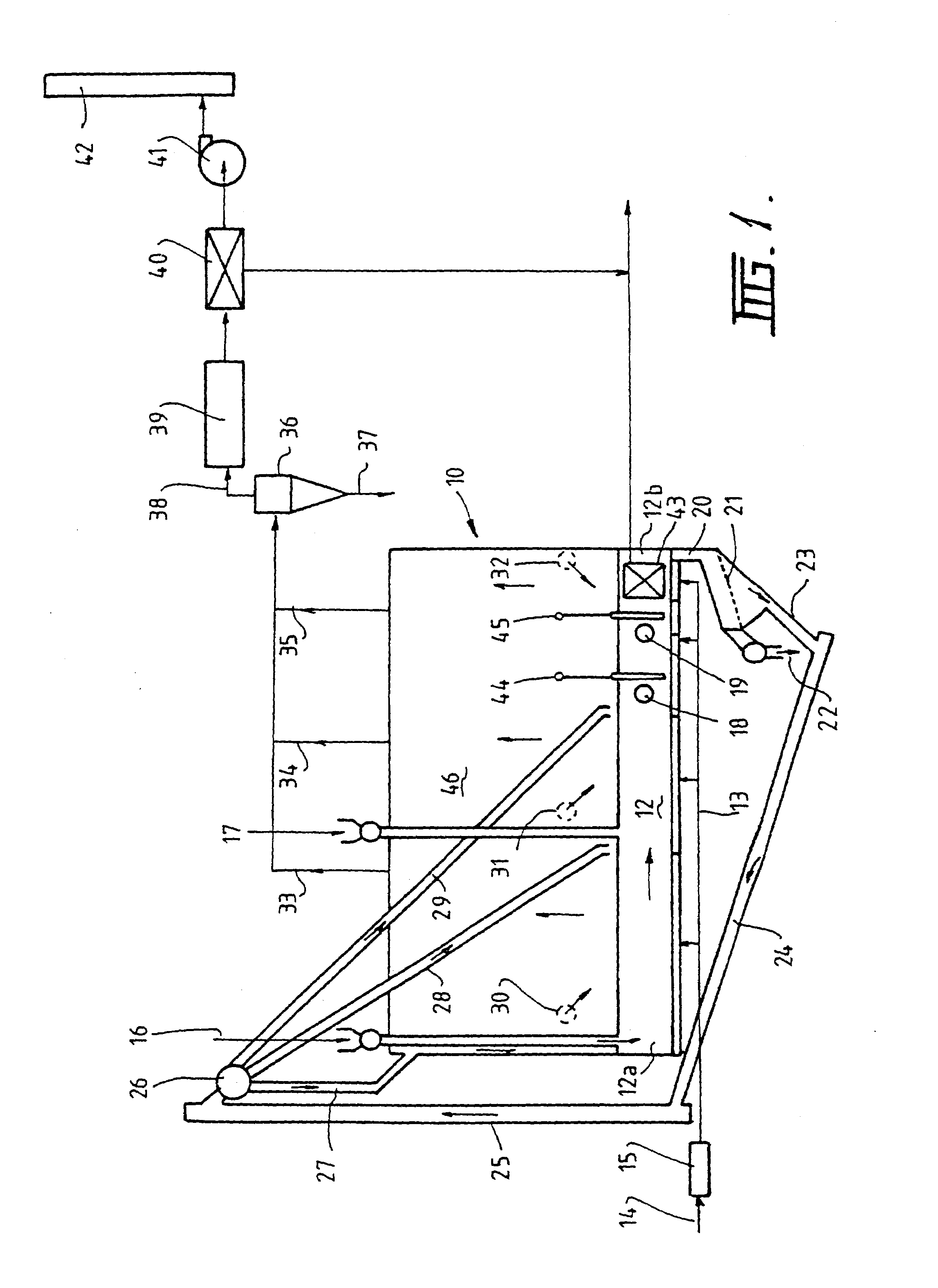Process for carbonizing wood residues and producing activated carbon
a technology of activated carbon and wood residues, which is applied in the direction of lighting and heating apparatus, combustion types, furnaces, etc., can solve the problems of large quantities of wood residues generated by the timber industry, undersized and oversized woodchips, and poor utilization of wood residues
- Summary
- Abstract
- Description
- Claims
- Application Information
AI Technical Summary
Benefits of technology
Problems solved by technology
Method used
Image
Examples
Embodiment Construction
[0034]The inert particulate material may comprise any suitable particulate material that is able to be fluidized and does not undergo substantial reaction in the operating conditions experienced in the fluidized bed. Sand is a suitable particulate material for use in the present invention. Fine sand is preferred over coarse sand because fine sand gives better heat transfer to submerged surfaces (such as a heat exchanger within the bed) and to cold feed particles of wood residues and promotes better combustion of volatile gases within the bed. Fine sand also causes less attrition of submerged surfaces and products then coarse sand. Ilmenite sand has been found to be particularly suitable because it has a fine size (typically below 1 mm), is very dense, wear resistant and has a high melting point. Thus, it can be used over a wide range of operating conditions. Ilmenite sand is a naturally occurring, relatively abundant, low cost material.
[0035]Calcined alumina may also be used as a su...
PUM
| Property | Measurement | Unit |
|---|---|---|
| temperatures | aaaaa | aaaaa |
| temperatures | aaaaa | aaaaa |
| specific surface area | aaaaa | aaaaa |
Abstract
Description
Claims
Application Information
 Login to View More
Login to View More - R&D
- Intellectual Property
- Life Sciences
- Materials
- Tech Scout
- Unparalleled Data Quality
- Higher Quality Content
- 60% Fewer Hallucinations
Browse by: Latest US Patents, China's latest patents, Technical Efficacy Thesaurus, Application Domain, Technology Topic, Popular Technical Reports.
© 2025 PatSnap. All rights reserved.Legal|Privacy policy|Modern Slavery Act Transparency Statement|Sitemap|About US| Contact US: help@patsnap.com



